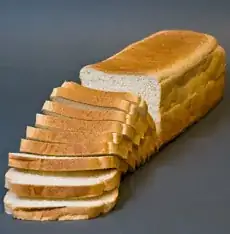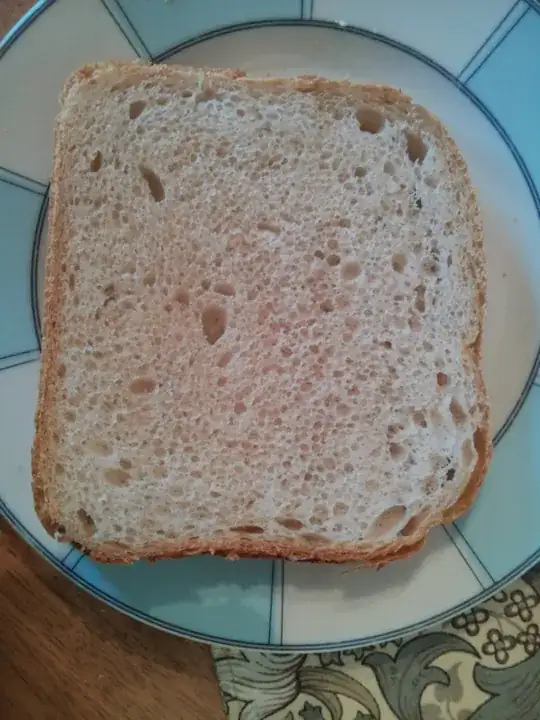I would like to make the dense&soft bread like the bottom one and the taste is plain not sweet. What techniques will make bread closer to the one I want? I also want it to be chewy, not just soft.

I would like to make the dense&soft bread like the bottom one and the taste is plain not sweet. What techniques will make bread closer to the one I want? I also want it to be chewy, not just soft.

It is hard to say without seeing the whole loaf, but the crust and crumb of that bread look like a pullman loaf.

Pullman bread (usually called pan de mie in Europe) involves baking the bread in a pan with a tight fitting lid. As the bread proofs, it comes in contact with the lid. This restriction causes the bread to retain a very fine crumb since it can't expand too much. This fine crumb, and the soft crust caused by being completely surrounded by a pan, make pullman loaves ideal for sandwiches.
Sometimes mass-produced proof-and-bake breads for grocery chains will have a similar texture, but it is usually a combination of making the bread with shortening and a bit of sugar for tenderness, and a lot of dough relaxers and oxidizers to control the texture.
It is hard to achieve what you want. Starch makes bread soft, gluten makes it chewy. Normally, you would want flour low in protein for soft bread and flour high in protein for chewy bread. The protein in the bread combines to form gluten during kneading, which is chewy. The chewy bread is also less dense, as the rising process is a bit like filling tiny baloons with gas, and the gluten "baloon walls" stretch better and make larger holes.
What you can do is to opt for AP flour, which has a medium protein content. It will be softer than bread made with bread flour. You have to use a finely milled flour, whole wheats won't work at all (they will make the bread dense but not soft). I am a bit puzzled as to what amount of kneading to suggest. For bread like on your picture, I would say that you should underknead a bit, to make it soft. But the more you knead, the chewyer your bread gets.
To make the bread softer, I would use milk instead of water. Breads made with (full fat) milk normally look like the one in your picture.
Adding an egg yolk (or pure lecithine, if you have it) will make it a bit softer too, and give it a smooth quality. Don't add whole eggs, as the egg white makes it more dry/tender, less supple/soft. A little bit of fat is also a filler which makes for softer, denser bread. These are not as important as the milk though. You will have to try around a bit and see what you prefer.
The optimal hydration is probably 60%. I have seen (and made) bread of roughly your style with 60% and AP flour. More will give you larger holes; less will make the bread denser, but also less soft.
To make it dense, you want a short rise. Skip the punching altogether; rise once, then shape, proof in the pan, and bake. Don't use a pizza stone or a preheated pan, these will give you large holes.
Reducing the amount of yeast, in my experience, will make a denser bread. Below is a photo of a French style white loaf made with 50% the amount of yeast I would normally use. The bubbles are noticeably smaller, and the texture is different.
Does reducing the amount of yeast give the desired effect, or get any closer to it, for you?
